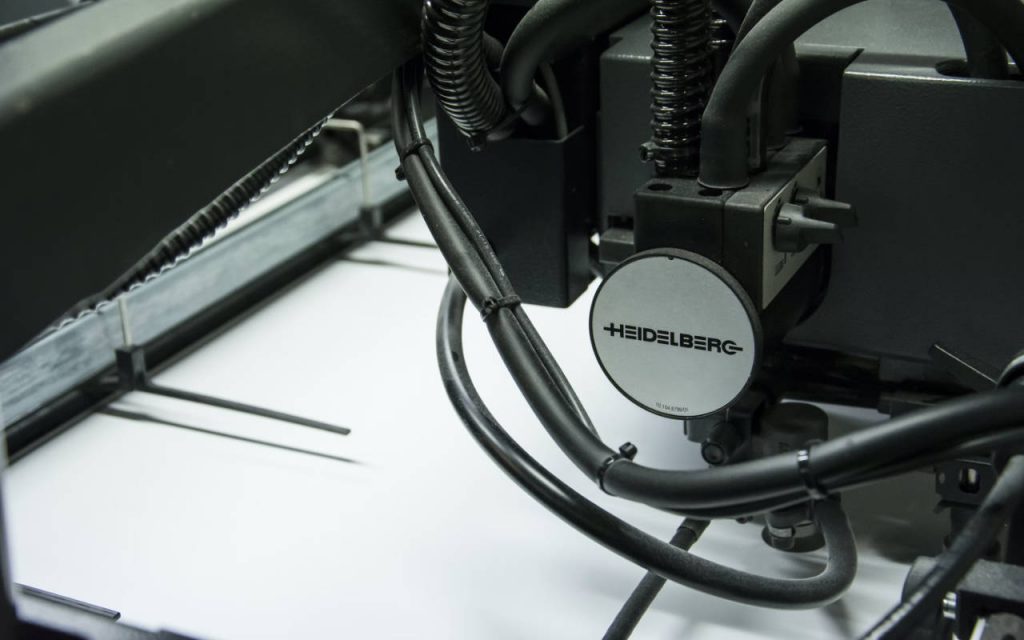Printed polythene is a go-to, all-in-one packaging solution for countless items.
Sterile packaging for medical supplies can be clearly printed with vital information – giving doctors, nurses, and paramedics the confidence to act with the right equipment in life-threatening situations. Hazardous waste can also be clearly signposted, with coloured polythene sporting printed warning labels.
Printed gusseted bags can be used as a single POS packaging product, eliminating the need for boxes, labels or instruction leaflets. And printed polythene packaging shows off your brand – at every step of the logistics chain, through to the moment of contact with your end customer.
It’s useful – and it’s nice to look at. So, how does polythene get printed? Let’s find out…

How printed polythene is made
First, polythene packaging products (be they centrefold, single wound sheeting or polythene bags) begin life as a big bubble of layflat tubing: the mother of all polythene packaging products!
To make layflat tubing (LFT), pellets of virgin or recycled polythene are heated in a chamber within a machine, until they melt to the consistency of jam. Then, an extruder blows air through the jam-like polythene, to form a tall bubble. At the top of the open end of the tube, rollers flatten the polythene. From here, it either gets cut into, single wound polythene film roll, cut in between to make centrefold sheeting, sealed, cut or perforated into polythene bags – or it’s left as it is, to be used as LFT.
Learn more – How is polythene film made?
Coloured polythene additives can also be included before the material is blown – adding an extra dimension of branding to the packaging.
Anyway – before we jump ahead… Once the polythene has been made to specification, it’s time to print it. And this can happen in several ways, usually while it’s still on a roll.
Polythene can be screen printed (as most things were in the old days), but this is best suits to thicker, more rigid sections – and not good for films or sheets. UV litho printing is good for large, continuous runs, but is similarly labour-intensive.
Flexographic printing is a common printing format in plastics, as it can apply to a wide range of materials (including polythene). Flexo printing runs at extremely high speeds and can produce long printing runs, with minimal waste – but it can lack the high resolution finish of lithography.
Another common way to print polythene is with a digital printing process.
Digital print technology has mostly overtaken other formats as the dominant printing method, as the balance of quality, accessibility and speed of production is unrivalled. Digital printing has made what was once impossible – complex print designs, turned around in quick succession – a daily reality.
Using special evaporating inks designed for plastics, high quality, full colour images can be printed directly onto polythene bags, films and sheets, with minimal setup. This makes digital printing great for one-offs, seasonal design variations, and short production runs.
Digital printing can be expensive, so long production runs aren’t cost-effective – and while litho and flexo printing are more labour-intensive, they work out cheaper for longer runs, and there will always be a “best choice” for each situation.
Whichever way your polythene packaging gets printed, the result will be first class.
When to use printed polythene
The primary uses for printed polythene are branding, labelling, usage instructions, and safety warnings. If your packaging is customer-facing, or contains a consumer product, then it is highly likely that some form of printing is required.
This can be advantageous, as it cuts down on paper, label-making and other printing costs – but it can also be absolutely vital.
Case in point; asbestos removal. Heavy duty polythene bags for asbestos are used to contain this deadly material, so that it can’t harm anyone – and doing so safely requires proper labelling.
All asbestos waste must be double wrapped and labelled; with a red coloured polythene inner bag, printed with asbestos warnings, and a clear polythene outer bag with the carriage of dangerous goods (CDG) hazard sign printed onto it.
And printed polythene is also widely used in hospitals. Coloured polythene is used to clearly mark different types of medical waste in hospitals, with relevant warnings printed directly onto polythene bags for medical waste.
If you’re looking for printed polythene packaging – then give us a call. We’ve been in the polythene packaging business since 1968, and have grown into a leading UK supplier of coloured, treated and printed polythene for a wide number of applications.
Printed polythene: better packaging, for less
Order printed polythene from NPF Packaging – the polythene packaging experts. Get a quote now, or call us on 01773 820415 to get started.


